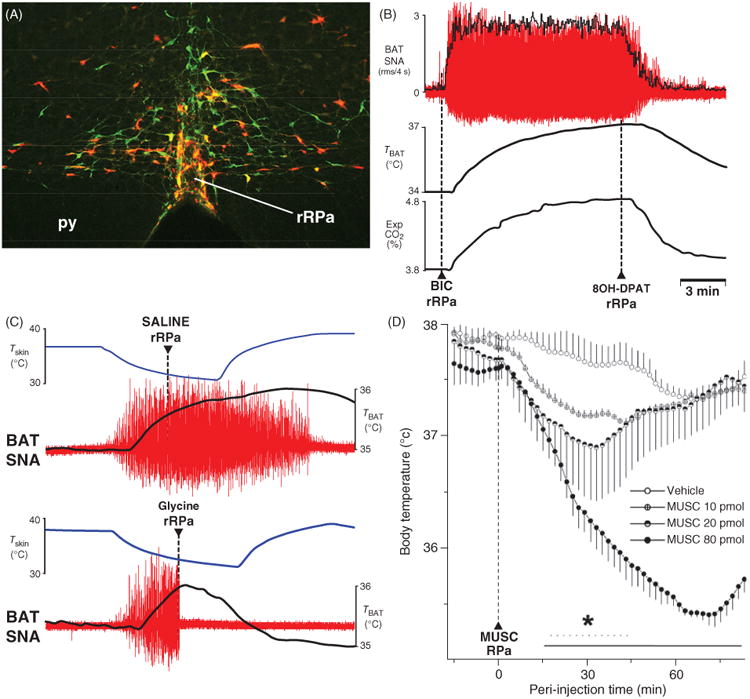Figure 5.

Rostral raphe pallidus (rRPa) contains BAT sympathetic premotor neurons whose activity determines the level of BAT thermogenesis. (A) Histological section through the rostral medulla at the level of the facial nucleus and the rostral raphe pallidus (rRPa) illustrating the transsynaptic, pseudorabies virus (PRV) labeling of BAT sympathetic premotor neurons (red) following PRV inoculations in interscapular BAT, and serotonergic neurons (green) immunohistochemically labeled for tryptophan hydroxylase, and rRPa-BAT neurons that contain both markers (yellow). py, pyramidal tract. Modified, with permission, from (44). (B) Nanoinjection of bicuculline (BIC) in rRPa disinhibits BAT sympathetic premotor neurons and elicits a dramatic increase in BAT sympathetic nerve activity (SNA), BAT temperature (Tbat), and metabolic oxygen consumption, indirectly indicated by the elevation in expired CO2 (EXP2). Subsequent activation of the inhibitory 5-HT1A receptors in rRPa with a local injection of 8OH-DPAT completely reverses the activation of BAT, likely by inhibiting BAT sympathetic premotor neurons. (C) Inhibition of local neurons in the rRPa with a nanoinjection of glycine produces a rapid and complete reversal of the skin cooling-evoked increases in BAT and Tbat, despite the sustained reduction in skin temperature (TSKIN). Modified, with permission, from (241). (D) Decreases in core body temperature after microinjection (dotted line) of 10, 20, and 80 pmol/100 nL of muscimol (MUSC) or saline vehicle into the RPa in four conscious rats. Bars with asterisk denote intervals during which temperature was significantly less than after saline treatment: solid bar, MUSC 80 pmol; dotted bar, MUSC 20 pmol. Modified, with permission, from (416).
